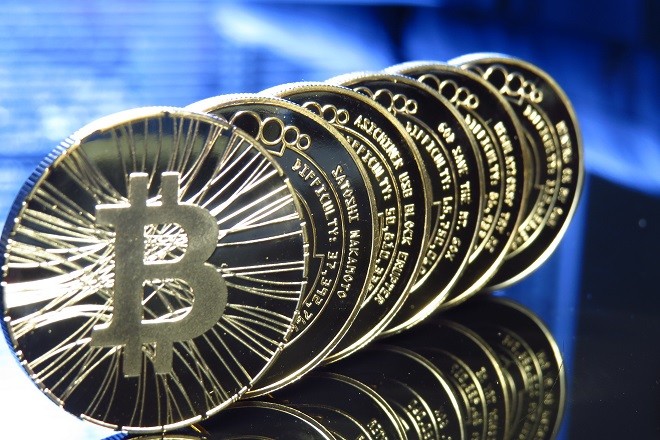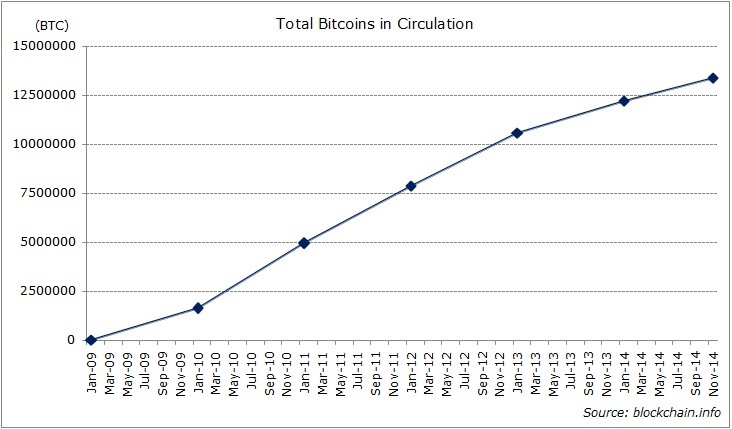How To Invest In Bitcoin Exchange Futures Investopedia
Post on: 14 Апрель, 2015 No Comment

The price of Bitcoin has tended toward sharp rises and drops, and this volatility has been a great concern among potential traders. The huge fluctuations have mainly been due to the lack of confidence in the Bitcoin system, its fragile reputation, and its stark reaction to bad news, which often leads to a steep price drop, before rising again. Though wild fluctuations take away the attractiveness of any asset, a certain amount of swing in price creates trading opportunities. Many Bitcoin believers buy the digital currency and then sell at a profit through an exchange. Bitcoin exchange is an important part of the Bitcoin ecosystem; it facilitates the buying and selling of Bitcoins, as well as future trading.
A Bitcoin exchange operates somewhat similar to online stock trading brokers, where customers deposit their fiat currency (or Bitcoins) to carry out trades. However, not all Bitcoin exchanges offer such services. Some exchanges are more like wallets and thus provide limited trading options or storage of currency (both digital and fiat) for trading. The bigger and more elaborate exchanges offer trades between different cryptocurrencies, as well as between digital and fiat currencies. The number of currencies supported by an exchange varies from one exchange to another. (For more, see: Why Is Bitcoin’s Value So Volatile.)
Typically exchanging is done through matching the buy and sell orders placed on the system of the exchange. The sell orders are made at an offer price (or ask) while the buy order (or bid) is made to buy Bitcoins. It is similar to buying stocks online where you need to enter the desired price (or market price) for buy/sell along with the quantity. These orders enter the order book and are removed once the exchange transaction is complete.
Anyone interested in buying Bitcoins needs to deposit funds in US dollars, euros, or another currency supported by the exchange. The popular methods of transferring money to the currency exchanges are through bank wire transfers, credit cards, or liberty reserves. One of the pre-requisites here is to have a digital wallet to hold Bitcoins. Bitcoins bought can be stored in a digital wallet, device, or paper wallet, depending on the buyer’s preference. For sellers, the fait currency for which the Bitcoins have been sold needs to be withdrawn from the exchange and sent to a bank. One issue that can arise is if the exchange has liquidity concerns at a particular point in time; such situations can delay withdrawal and transfer of funds into a bank account. (For more, see: A Look At The Most Popular Bitcoin Exchanges.)
Some exchanges offer trading on margin. When such an option is available, Bitcoiners are allowed to borrow funds from peer liquidity providers to carry out trades. The term liquidity provider refers to those who are ready to deposit their Bitcoins and/or dollars with the exchange for use by others for a certain pre-fixed duration, rate, and amount. For example, say a Bitcoiner wants to buy 20 Bitcoins, anticipating that its price would rise in future and thus hopes to profit by selling them at a later date. If the person does not have sufficient funds to buy the 20 Bitcoins, the margin facility allows him to borrow the amount required (20 X the price of Bitcoins in USD) from a liquidity provider. When the Bitcoiner chooses to close the position, he needs to repay the amount borrowed plus the interest accrued during this time period. Remember that the amount accrued (loan + interest) needs to be reimbursed regardless of profit or loss at the time of settlement.
Additionally, a maintenance margin needs to be maintained in the trading account used to cover the losses incurred during trading. As the account gets depleted, a margin call is given to the account holder.

A futures contract is a technique to hedge positions and reduce the risk of the unknown. It is also used for arbitrating between current spot and future contracts. In the case of Bitcoins, futures are more associated with miners who also face the risk of unknown future prices. OrderBook.net (formerly iCBIT), a futures marketplace operating since 2011, sells millions of futures contracts each month. The standard contract size (or tick size) is $10. A typical instrument would look like this: BTC/USD-3.14. Here BTC/USD signifies the rate of exchange between Bitcoin and US dollar, 3 means the month of March, and 14 signifies the year 2014. The trading symbol for the same instrument will be BUH4. Each month has a trading symbol like March is H (as per Chicago Mercantile Exchange), the B is taken from BTC and the U from USD, and 4 signifies the year.
In a futures market, if the price is $500/BTC, an investor needs to buy 50 futures contracts, each worth $10. If an investor wishes to open a positive position then he goes long with “buy contracts, and if he decides to open a negative position, he goes short with “sell” contracts. An investor’s position can be either positive or negative for the same instrument. (For more, see: Bitcoin Mass Hysteria: The Disaster that Brought Down Mt. Gox.)
A Bitcoin exchange (like any online trading firm) charges its clients a fee to carry out trading activities. As exchanges face the risk of hacking and theft, it is wise not to trust an exchange with all your coins. You should split and keep part of them in other devices or cold storage. Bitcoin future contracts and trading on an exchange are risky, and an investor should be very sure of their game plan! (For more, see: The Risks Of Buying Bitcoins.)














